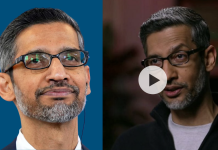The Root Cause Hypothesis: Configuration Error Meets Scheduled Maintenance
While Cloudflare has promised a detailed post-mortem, the pattern strongly suggests a configuration management failure, likely deployed during routine operations.
The disruption coincided directly with several planned network activities.
Cloudflare’s status pages confirm scheduled maintenance was underway in various global data centers, including Santiago (SCL), Miami (MIA), and Los Angeles (LAX) on that day. This temporal alignment is highly diagnostic. When core infrastructure changes coincide with widespread, synchronous failures, the likelihood of an inadvertent configuration error dramatically increases.
This script has been observed before. Previous Cloudflare events, such as the critical error in March 2025 where a simple key rotation mistake caused global write failures , or the DNSSEC expiration incident in October 2023 , were rooted in procedural or configuration issues. It’s a recurring vulnerability, where the complexity of managing a massively distributed network leaves tiny cracks for human error to propagate globally.
The Fatal Flaw: When the Control Plane Fails
For network engineers, the most alarming detail of this Cloudflare Outage was the simultaneous failure of the customer-facing services and the company’s internal diagnostic tools. Cloudflare explicitly stated that the “Cloudflare Dashboard and API also failing”.
The Dashboard and API make up the Control Plane, the management layer responsible for provisioning, monitoring, and configuring the entire network. The customer-facing services are the Data Plane. When the system responsible for managing the network is compromised by the same failure affecting customer traffic, engineers lose vital visibility, severely extending the time it takes to diagnose and implement a fix, known as the Mean Time to Repair (MTTR).
The decision to surgically disable the WARP encryption service in the London region during remediation further illustrates the internal struggle. This tactical measure suggests engineers were isolating a compromised network segment to contain the fault and safely revert the faulty configuration before re-enabling access.
The Anycast Paradox: Resilience Becomes Synchronization
Cloudflare’s genius lies in its use of Anycast networking, a powerful technique where the same IP address is advertised globally, ensuring users are routed to the nearest server. This architecture is exceptional for performance and defending against massive DDoS attacks, as traffic is immediately dispersed.
However, this efficiency introduces a massive architectural paradox. Anycast transforms a small configuration error from a localized glitch into a global synchronous collapse. A single faulty configuration pushed to the Control Plane instantly contaminates the state of thousands of geographically disparate edge servers, leading to simultaneous 500 errors across the planet.
The dependency crisis deepens when considering Cloudflare’s role as a fundamental gatekeeper of the internet’s hidden infrastructure. This centralization of services means that when they fail, the disruption is immediate and profound, affecting unrelated businesses across every sector.
Lessons Learned, Mitigating the Next Cloudflare Outage
The November 18 Cloudflare Outage provides two essential takeaways for every organization running critical services online:
1. Isolate the Crisis Infrastructure: For Cloudflare, the imperative is clear, the crisis communication and diagnostic tools, the Control Plane, must be architecturally and physically isolated from the main network. Whether utilizing entirely separate cloud providers or isolated internal stacks, the ability to monitor and manage a failure must never be compromised by the failure itself.
2. Embrace Multi-Vendor Resilience: For enterprise clients, relying on a single vendor, no matter how robust, is an existential risk. The time is now to mandate Multi-CDN and Multi-DNS strategies. Traffic steering mechanisms should be implemented to instantly failover critical services away from Cloudflare, or any foundational provider, the moment a global issue is detected. Furthermore, core functions like authentication and configuration must be decoupled from edge services to prevent a CDN error from crippling user logins or state management.
Infrastructure stability is no longer just a technical detail, it is a material factor in corporate valuation, as Cloudflare’s stock declined by more than 4% in premarket trading immediately following the incident. The future of a stable, decentralized internet depends on moving beyond single points of failure and building a network that expects, rather than avoids, the occasional systemic hiccup. The industry must learn from these outages to build truly antifragile systems.










